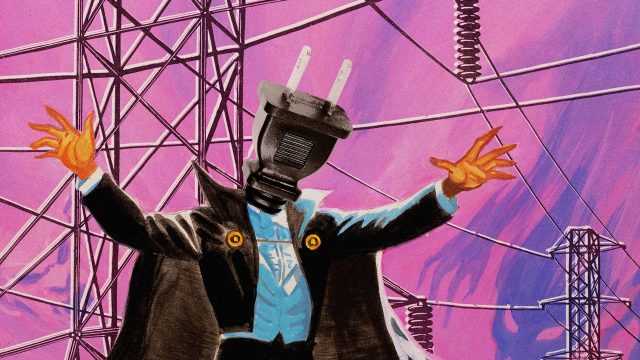
You might assume that when you turn your television or lamp off, it’s no longer using electricity — but for a lot of devices that’s not the case. Many home appliances still consume small amounts of electricity when plugged in, even if they’re turned off. This type of power consumption, known as “vampire energy” or “phantom energy,” can have a substantive impact on your electric bill — but experts say there are ways to combat this.
How does ‘vampire energy’ work?
Wasted electricity from vampire energy “comes from leaving devices plugged in when they’re not in use,” said The Associated Press. The most notable example of this are entertainment devices. Many televisions with internet connections and smart wake capabilities “allow them to interact with phones and other devices,” allowing them to “consume up to 40 watts of energy during the hours of the day that the TV would normally be off,” Matt Malinowski, director of the buildings program at the American Council for an Energy-Efficient Economy, told the AP.
Other devices also draw energy even when turned off. This includes “desktop computers that were put into sleep mode instead of being powered off, chargers that still draw power even if the device is not connected” and “new smart home appliances like refrigerators, washers and dryers that have always-on displays,” said CNET.
This vampire energy “may not readily be noticed” by consumers, but it is a “big issue,” according to the U.S. Department of Energy. It can account for “5% to 10% of residential energy use, and could cost the average U.S. household as much as $100 per year.”
How can you cut down on ‘vampire energy’?
Luckily for most consumers, modern appliances have gotten better at cutting down on vampire energy. Most “lights, electronics and appliances in your home are already pretty efficient and use much less energy than their predecessors from 10 or 20 years ago,” said Wirecutter. Significant waste like “excess standby power, which devices draw while plugged in but not turned on, has largely been engineered and regulated out of new products.”
There are still a number of steps you can take to ward off the vampires — and cut money off your electric bill. There is the obvious solution to “take a little step of unplugging the things that you’re not using,” Aidan Charron, the associate director of Global Earth Day, said to the AP. This will “save you money and it’ll save emissions in the long run.”
While televisions and similar devices may seem like the obvious choice, there are other things that can be unplugged to save electricity. Examples “could include old wireless phones, old media players or lamps that are more decorative than functional,” said CNET. Though this may seem like a tedious task, you “can also set up ways to make the process of cutting phantom load more automatic,” such as plugging devices into surge protectors.
Many have experimented with this type of behavior and had success. “I went around and unplugged everything in my house that is not in regular use, including electric heaters, multiple candle warmers and several abandoned surge protectors and charge stations,” reporter Crystal Ponti said for Wired. “My electricity bill dropped by $38 the next month and $30 the month after, shaving about a third off what I typically paid.”
Wasted energy could account for up to 10% of home use






